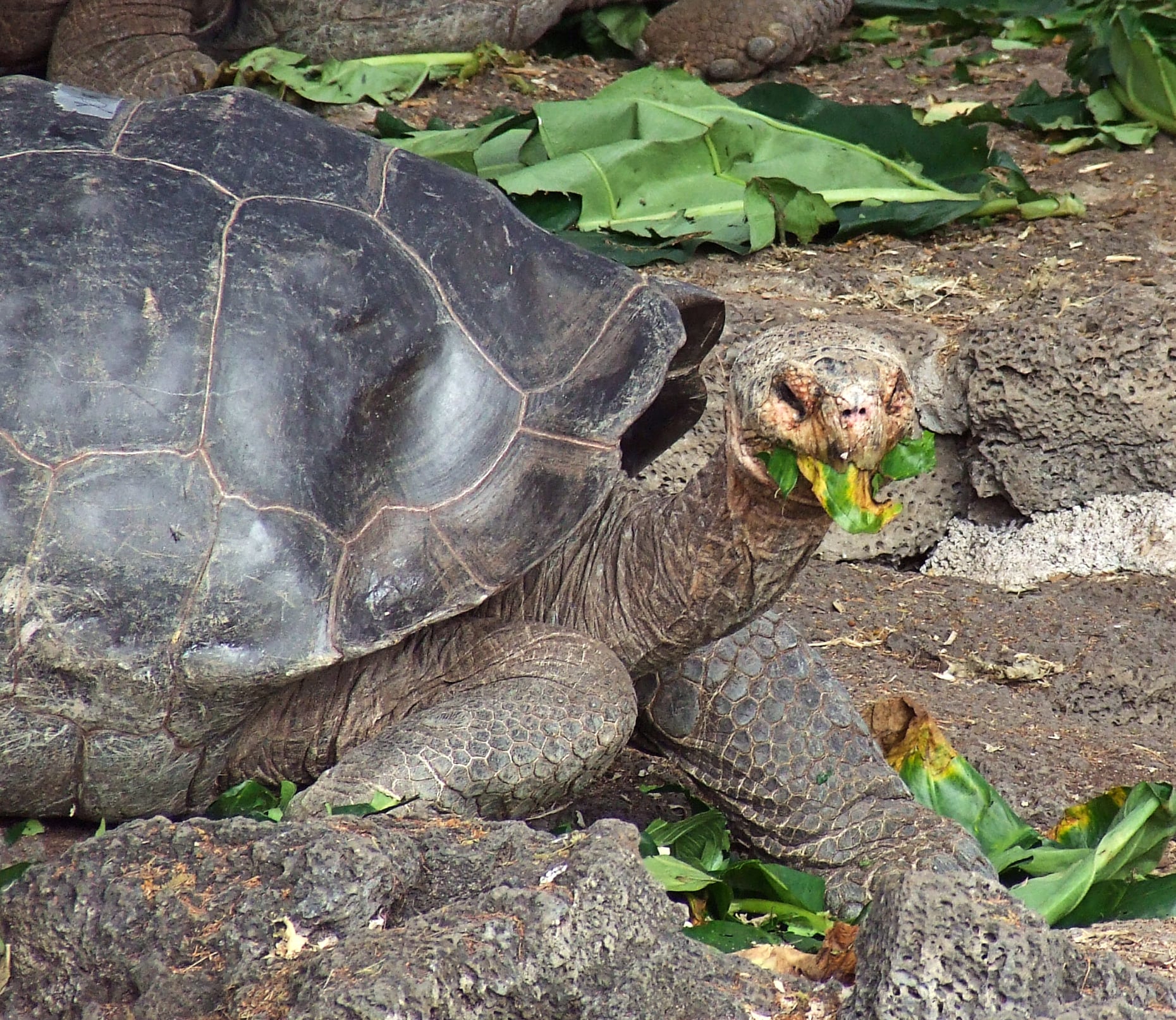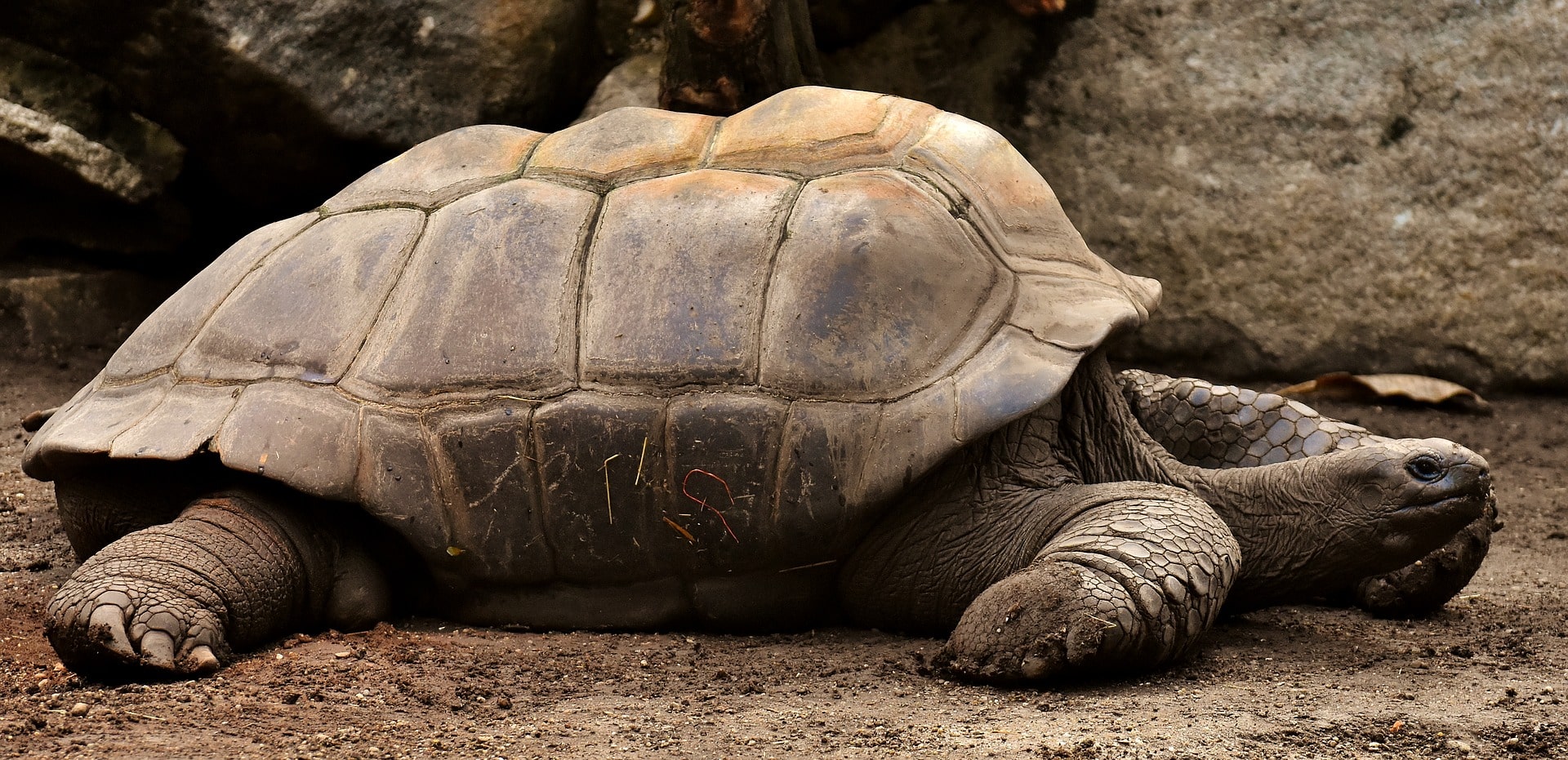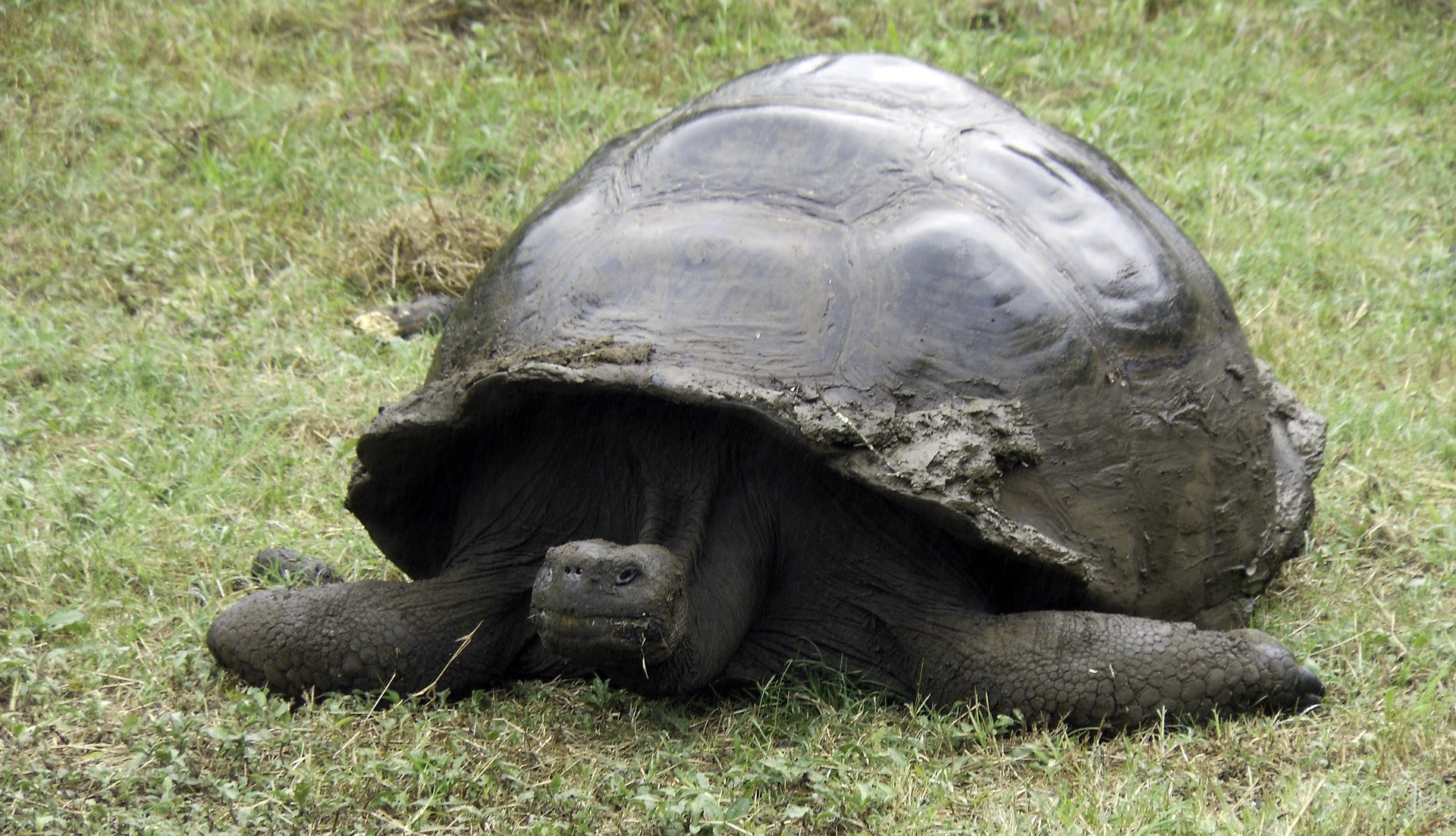 |
| About The Galapagos Islands Giant Tortoise |
About The Galapagos Islands Giant Tortoise. The giant tortoise or other designation, Chelonoidis nigra, is the name of a type of tortoise that got this name because of its enormous size.
In fact, this turtle is indeed the largest tortoise species and one of the heaviest reptiles in the world. Reaches 1.5 m in length, while weighing up to 300 kg more.
Its large size makes this turtle strong enough to be ridden by adult humans. Unlike other turtle species in general, giant tortoises cannot swim and spend their entire life on land.
About The Galapagos Islands Giant Tortoise
Giant tortoises are only found in the Galapagos Islands, a small group of islands located west of the country of Ecuador, South America.
Based on the shape of the outer shell, the Galapagos tortoise is divided into 2 main subspecies, namely the round shell subspecies and the flat shell subspecies.
The round-shelled subspecies is large and lives on islands with high rainfall. In contrast, the flat-shell subspecies is smaller and lives on more arid islands, so it is easier for this subspecies to tilt its front legs up to eat cactus leaves on treetops.
In terms of food, giant turtles are herbivorous animals that make soft cacti, grass, and fruits as their main food.
 |
| About The Galapagos Islands Giant Tortoise |
At first glance, giant turtles look like lazy animals because when they don't eat, they spend more of their time resting, soaking in the lake, or just walking slowly.
The lazy behavior itself arises because giant tortoises have a slow metabolism. On the other hand, the giant tortoise's slow metabolism helps the animal to live without food and drink for more than a year.
The giant tortoise breeding
The giant tortoise breeding season runs from January to August. During this period, male turtles will actively seek out females by smelling their hormones in the air.
After the male finds the female, the male will cut and bite the female's leg so that the female then pulls the leg into her own shell.
 |
| About The Galapagos Islands Giant Tortoise |
At this time, the next male will climb up the female's shell and marry her. After mating, the female will then go to sandy lowlands to burrow and lay eggs there.
The number of eggs that can be issued by the female can reach 10 eggs. After laying eggs, the female will then bury the burrow and leave the egg.
These eggs take between 110 - 175 days to hatch where the higher the ambient temperature, the shorter the time it takes for the eggs to hatch.
Read More: About the Black Iguana, the Fastest Reptile in the World
When newly hatched, the baby turtles must live independently and are vulnerable to death due to accidents and hot weather.
However, if they make it through their childhood safely, the giant tortoise will experience sexual maturity at the age of 20 years and can live to the age of 170 years.
The Galapagos Islands Giant Tortoise Videos
Giant tortoises have a mutualism symbiotic relationship with the soot-headed Bulbul Galapagos where the bird in question helps clean the giant tortoise shell by eating parasitic animals that stick to its skin.
In the food chain cycle, adult giant tortoises have no natural predators in the wild due to their large size. However, young turtles are vulnerable to being eaten by Galapagos eagles.
When human boats land on the island, the threat to young turtles increases as they also carry rats, cats and dogs, whether intentional or not. Sailors also often bring giant turtles for food.
 |
| About The Galapagos Islands Giant Tortoise |
Since giant tortoises can live for months without being fed and drunk, humans can place giant tortoises on their ships for long periods of time and kill them only when they want to eat the animal in question.
As a result, if in the 16th century the population of giant tortoises was estimated at 100,000 individuals, in the 20th century the population was only 1,000.
Now, the giant turtle has been designated as a forbidden animal to be hunted and the Galapagos Islands as its wild habitat have also been designated as a nature reserve by the government of Ecuador. By: Ochie











0 comments